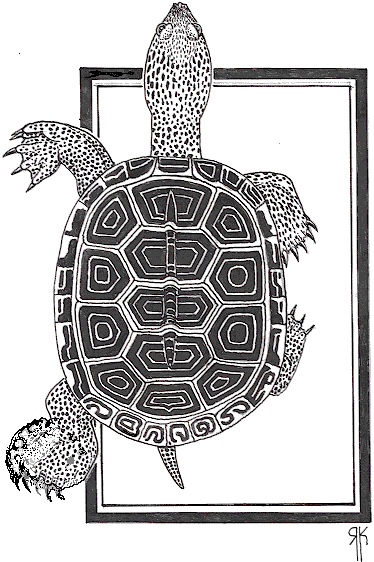Our Story
On the back of a turtle in the hands of a child.
The Terrapin Institute began in 1998 under the auspices of the Maryland, Department of Natural Resources, Fisheries Service. Originally, the Institute was just a list of advisors with particular expertise, (let’s get together and call ourselves an institute) who agreed to help with the development of a comprehensive terrapin conservation, stewardship and education program – Terrapin Station.
Based on licensing data, only 13% of the state’s population engaged in fishing and/or hunting. DNR was becoming less relevant and wanted to engage more of the State’s citizenry. Terrapin Station was the first of several components part of a broader effort, the Fisheries Conservation and Stewardship Program which was developed to reach the 87% of Marylander’s who were not recreational fishers or watermen. Since there were so few women and girls participating in sport fishing or commercial harvesting, Terrapin Station was designed to be interesting to girls as well as boys. Instead of pushing girls towards hunting and fishing, or whatever else DNR had to offer, Terrapin Station came up with something girls may actually like to do. Curiously, while DNR was fine with harvesting animals from the wild, nurturing and protecting animals in the wild was still a novel concept. Also, DNR taught children how to safely handle guns, but wasn’t sure that children could be trusted to safety handle native turtles. Old habits die hard.
Terrapin Station reached beyond conventional fishery and wildlife management and sought advice from professionals skilled in teaching, public relations, marketing, turtle cultivation, public health, civic engagement, and lobbying. In a few years diamondback terrapins had inspired citizen-driven comprehensive species conservation. The Severn River Association was the first to sign up and commit to restoring terrapin populations to the river. The head start part began with students from a middle school and elementary school. The plan was to head start terrapin hatchlings taken from healthy populations in the state and repatriate them once they reached a certain size. But first we had to make sure the habitat of the Severn was suitable and safe. Terrapin Station’s first significant act was the adoption in 1999 of regulations for the “ByCatch Reduction Device” for all crab pots set at private property. The next year we celebrated the first ever Diamondback Terrapin Day and entered into agreement with the US Naval Academy to use the Nature Center at Greenbury Point .
In one of their first lobbying efforts students participating in Terrapin Station packed up their head start and market terrapins and marched into the Board of Public Works to appeal to the Governor, Treasurer, and Comptroller to consider natural shoreline habitat before issuing wetland permits and licenses. Also in 2000 the University of Maryland joined Terrapin Station and setup the Fear the Turtle Fund to contribute to terrapin conservation. The real life terrapins promised to take the Terps to the Championship. Students then lobbied the Maryland General Assembly to appeal for a concerted effort to research and conserve the terrapins.
The Governor was so impressed he visited our research station and learned from the students how to tag and release terrapins. In 2001 the Governor announced his plan to research the wild terrapin population, investigate the commercial harvest, and convene the Governor’s Diamondback Terrapin Task Force.
Long Story Short
Due to budget cuts the DNR Terrapin Station and the Fisheries Conservation and Stewardship Program was abolished in 2003. It was a perfect storm and ideal time to carry on as a private organization. We decided to press on regardless and continue to implement the 2001 Recommendation of the Governor Task Force. Job One – Close the commercial terrapin harvest. The commercial harvest of terrapins was closed by the legislature in 2007.
